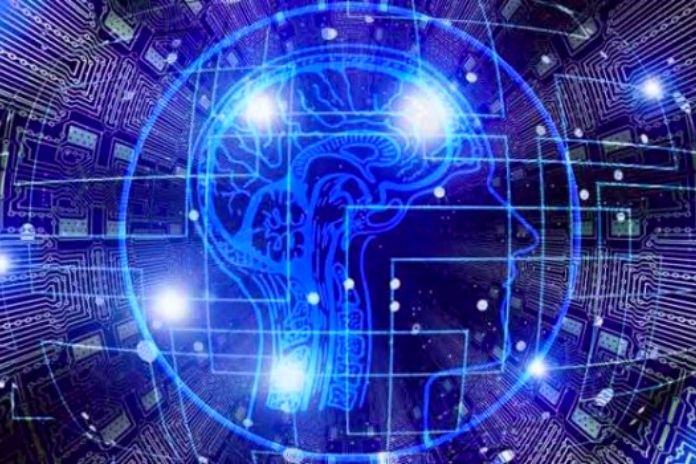Different Forms Of Machine Learning

There is currently great interest in artificial intelligence and machine learning ( Machine Learning ), as these technologies allow the automation of processes and analyses that were not previously possible.
However, it can be challenging to understand the various terms used to describe the different forms of machine learning and the types of problems that can be solved. So in this article, we’re going to look at some essential Machine Learning (ML) terms, the various forms of machine learning, and the problems we can solve using this technology.
Basic Concepts
The most common way to perform machine learning is to collect examples (historical data) and then train a model to infer the data.
Model:
An ML model is a representation of how to make a decision. It is possible to make a model with an image as input, which decides whether the image contains a person or not, for example. There are different types of ML models such as Decision Trees, Neural Networks, and Support Vector Machines. Unlike a traditional computer program, where people create decision rules manually, ML models learn the rules by analyzing sample data. The model type defines which rules can be known.
Training:
Training is how an ML model learns how to decide on interest by analyzing historical data. During training, an optimization algorithm changes the parameter values of the model’s decision rules to make good decisions for the historical data.
Inference:
After the model is trained on historical data, it can be used to make decisions (make inferences) on new data, which it did not see during training. The model may be suitable for making decisions on historical data but bad for never-before-seen data. In this case, we say that Overfitting has occurred and that the model does not generalize to new data. Achieving generalization is one of the significant challenges of ML, especially when there is little example data. If the model cannot make good decisions even for the training data, we say that Underfitting has occurred, and it may be necessary to use a more complex model. The term prediction can be used synonymously with inference.
Learning by trial and error:
Although the most common is to train machine learning models through examples (historical data), some algorithms perform the training by trial and error. These algorithms are often used when the AI model needs to interact with an external environment, such as playing chess against a human opponent. Depending on the case, it is possible to mix the concepts, carry out an initial training through examples, and then incorporate trial and error.
Primary Forms Of Machine Learning
Supervised Learning:
Techniques to train the model with manually annotated data (i.e., an expert says the expected output for each historical data used in training). Used to identify specific patterns (e.g., which object is present in an image). These are the most commonly used techniques.
Unsupervised Learning:
Techniques for training models with not annotated data (i.e., the expected output for each historical data used in training is not known). It can be used to identify correlations and make groupings (e.g., recognizing which images have similar objects but not recognizing which object is contained in the picture).
Reinforcement Learning:
Techniques that use trial and error to discover optimal decisions on interacting with the environment or other agents. It is based on the use of positive or negative reinforcements for optimization. Such support may come after a long sequence of actions (i.e., it may not be obvious which actions contributed to the positive outcome). These are the least used techniques.
Common Problem Types
To choose a suitable solution or technique for your problem, it is necessary to understand what types of issues are usually solved through machine learning and what the terminology is.
General Problems
- Regression (supervised): estimating a value for some characteristic based on the importance of other traits. Example: estimating a person’s weight based on height and age.
- Classification (supervised): figuring out which class something belongs to. Examples: determining whether an image of an industrial part is defective or not (i.e., it belongs to the “defective” or “non-defective” class); determining whether an email is “spam.”
- Forecasting (unsupervised): predicting future values. Examples: weather forecast (predict temperature, humidity, and precipitation); predict market trends (whether price or demand for something will increase or decrease).
- Anomaly Detection (unsupervised): identify if something is out of standard. Ex: analyzing machine sensors and warning if the behavior deviates from the norm, which can indicate failure.
- Clustering (unsupervised): grouping data with common characteristics. Example: grouping products to suggest similar ones on shopping sites.
- Control: make an autonomous agent that interacts with a dynamic environment, where the agent’s actions change the state of the environment, and there may be other agents present performing interactions. Examples: make an AI play chess; move a robot in an environment.
Specific Computer Vision Problems
- Detection (supervised): in addition to identifying which objects are present in an image, it serves to determine the position of each one (by drawing a rectangle around each entity).
- Segmentation (supervised): in addition to identifying which objects are present in an image, it serves to determine the exact region occupied by each one (outlining each object)
- Tracking (supervised): recognize the identity of objects throughout a video. For example: in a video with several pedestrians, realize that a person on the left at the beginning of the video is the same person who walked to the right until the end.
NLP (Natural Language Processing) Specific Issues
- Language Modeling (supervised): Predict the following words of a sentence. Examples: Used on smartphones to suggest words as you type. It is also used for “representation learning.”
- Question Answering (supervised): Answering questions asked in natural language. For example, one of the assistants’ features like Alexa and Siri; is possible chatbot functionality. Structure from Text (supervised): Extract structured information from running texts written without a pattern. Example: analyze sales reports written in plain Text by different salespeople and make a standardized table that can be easily filtered and analyzed.
Also Read: How To Protect Machine Learning Algorithms






